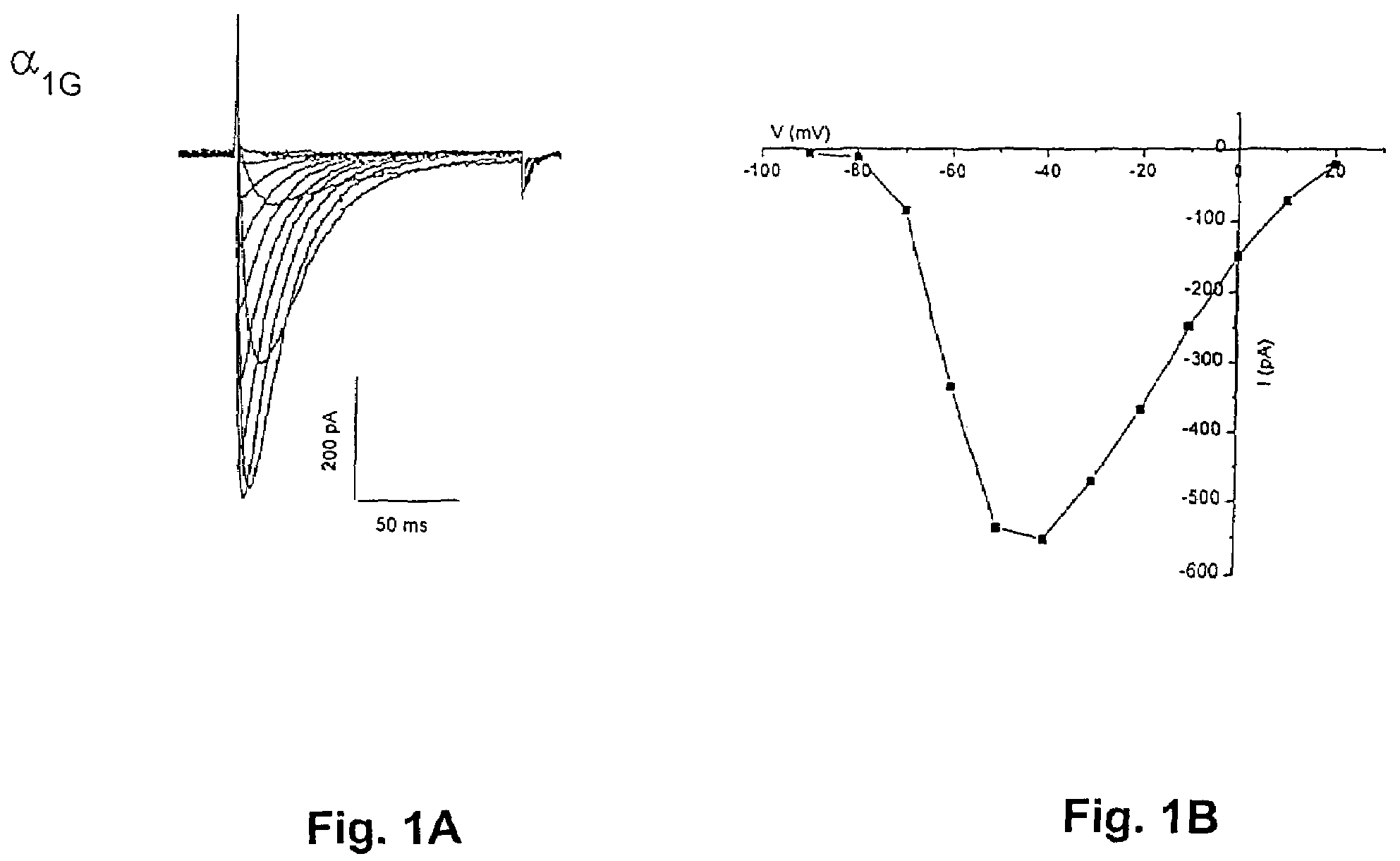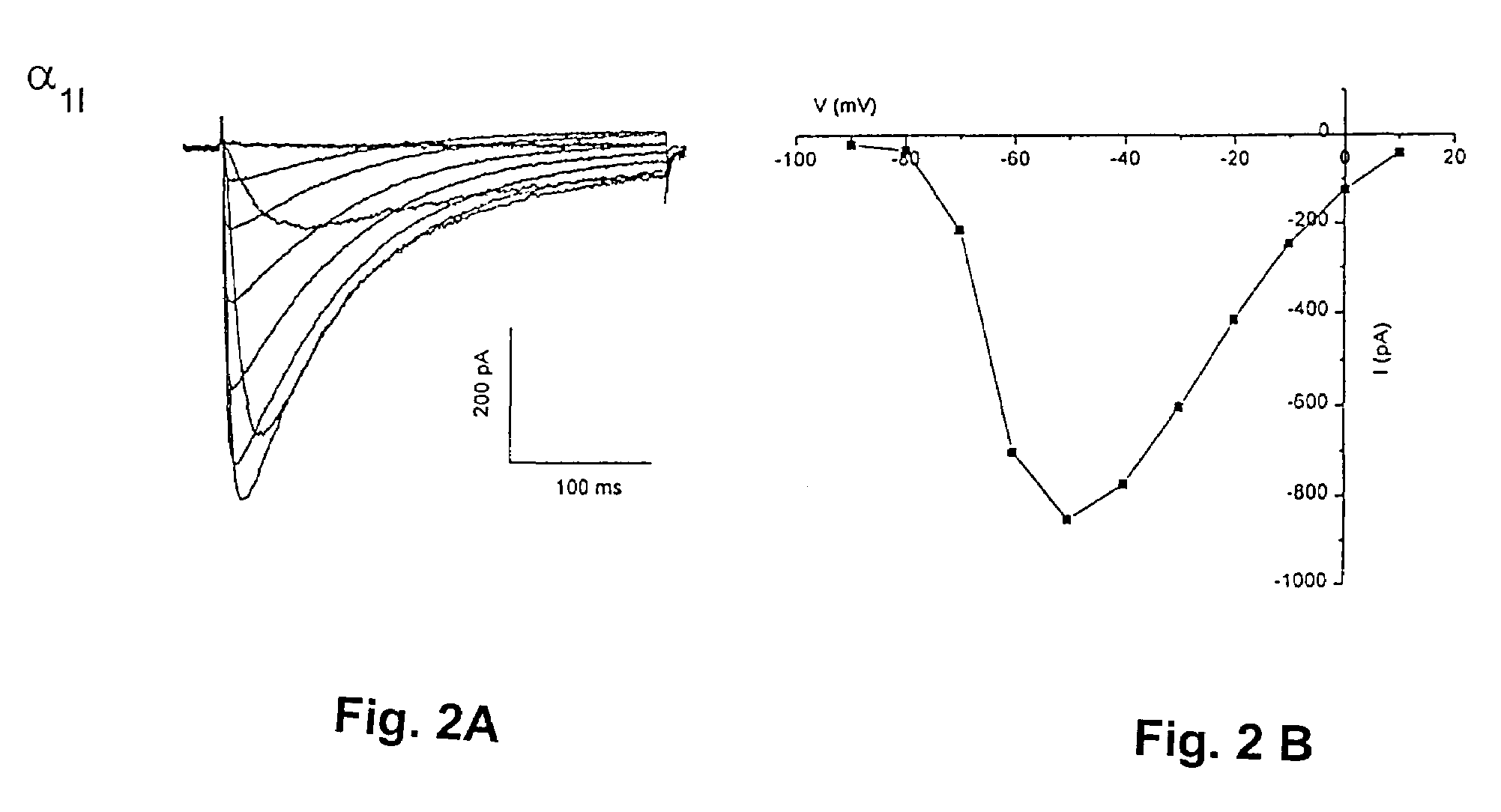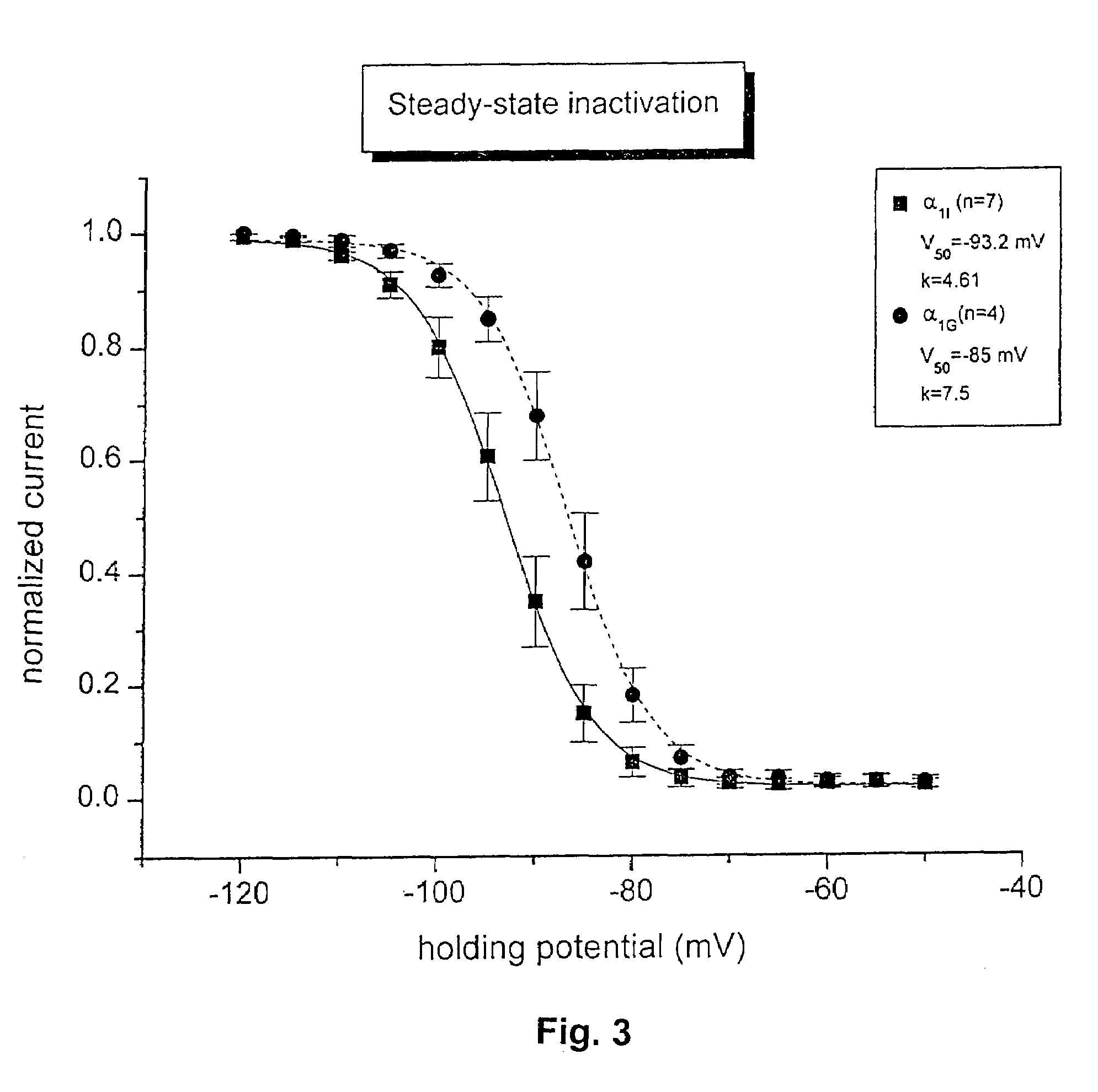Methods for identifying agonists and antagonists of human T-type calcium channels
a technology of agonists and antagonists, applied in the field of mammals, can solve the problems of not recognizing the novel calcium channels described in cerebellar granule cells or other types of cells
- Summary
- Abstract
- Description
- Claims
- Application Information
AI Technical Summary
Benefits of technology
Problems solved by technology
Method used
Image
Examples
example 1
[0059]In order to isolate novel human calcium channel α1 subunits using standard molecular cloning protocols, synthetic DNA probes are prepared, radiolabeled with 32P and utilized to screen human cDNA libraries commercially available in lambda phage vectors (Stratagene, La Jolla, Calif.) based on the human DNA sequences for H55225, H55617, H55223, and H55544. DNA fragments with the sequence of sequence ID Nos 17 and 19 may also be used for this purpose. Positive phage are purified through several rounds of screening involving immobilizing the phage DNA on nitrocellulose filters, hybridizing with the radiolabeled probe, washing off of excess probe and then selection of clones by autoradiography. Clones identified by this approach are expected to be partial length clones due to the nature of cDNA library synthesis and several rounds of screening for each calcium channel type may be necessary to obtain full-length clones.
[0060]To characterize the clones, double stranded plasmid DNA is ...
example 2
Heterologous Expression of Mammalian α1I Calcium Channels in Cells
A. Transient Transfection in Mammalian Cells
[0064]Host cells, such as human embryonic kidney cells, HEK 293 (ATCC# CRL 1573) are grown in standard DMEM medium supplemented with 2 mM glutamine and 10% fetal bovine serum. HEK 293 cells are transfected by a standard calcium-phosphate-DNA co-precipitation method using a full-length mammalian α1I calcium channel cDNA (for example, Seq. ID No. 27) in a vertebrate expression vector (for example see Current protocols in Molecular Biology). The α1I calcium channel cDNA may be transfected alone or in combination with other cloned subunits for mammalian calcium channels, such as α2δ and β subunits, and also with clones for marker proteins such the jellyfish green fluorescent protein.
[0065]Electrophysiological Recording: After an incubation period of from 24 to 72 hrs the culture medium is removed and replaced with external recording solution (see below). Whole cell patch clamp e...
example 3
Construction of Stable Cell Lines Expressing Mammalian α1I Calcium Channels
[0067]Mammalian cells lines stably expressing human αI1 calcium channels are constructed by transfecting the α1I calcium channel cDNA into mammalian cells such as HEK 293 and selecting for antibiotic resistance encoded for by an expression vector. Briefly, a full-length mammalian α1I calcium channel cDNA (for example Seq. ID NO. 27) subcloned into a vertebrate expression vector with a selectable marker, such as the pcDNA3 (InvitronGen, San Diego, Calif.), is transfected into HEK 293 cells by calcium phosphate coprecipitation or lipofection or electroporation or other method according to well known procedures (Methods in Enzymology, Volume 185, Gene Expression Technology (1990) Edited by Goeddel, D. V.). The α1I calcium channel may be transfected alone, or in combination with other mammalian calcium channel subunit cDNAs, such as the α2-δ and β1 b subunits, either in a similar expression vector or other type o...
PUM
| Property | Measurement | Unit |
|---|---|---|
| activation voltage | aaaaa | aaaaa |
| activation voltage | aaaaa | aaaaa |
| resistances | aaaaa | aaaaa |
Abstract
Description
Claims
Application Information
 Login to View More
Login to View More - R&D
- Intellectual Property
- Life Sciences
- Materials
- Tech Scout
- Unparalleled Data Quality
- Higher Quality Content
- 60% Fewer Hallucinations
Browse by: Latest US Patents, China's latest patents, Technical Efficacy Thesaurus, Application Domain, Technology Topic, Popular Technical Reports.
© 2025 PatSnap. All rights reserved.Legal|Privacy policy|Modern Slavery Act Transparency Statement|Sitemap|About US| Contact US: help@patsnap.com



